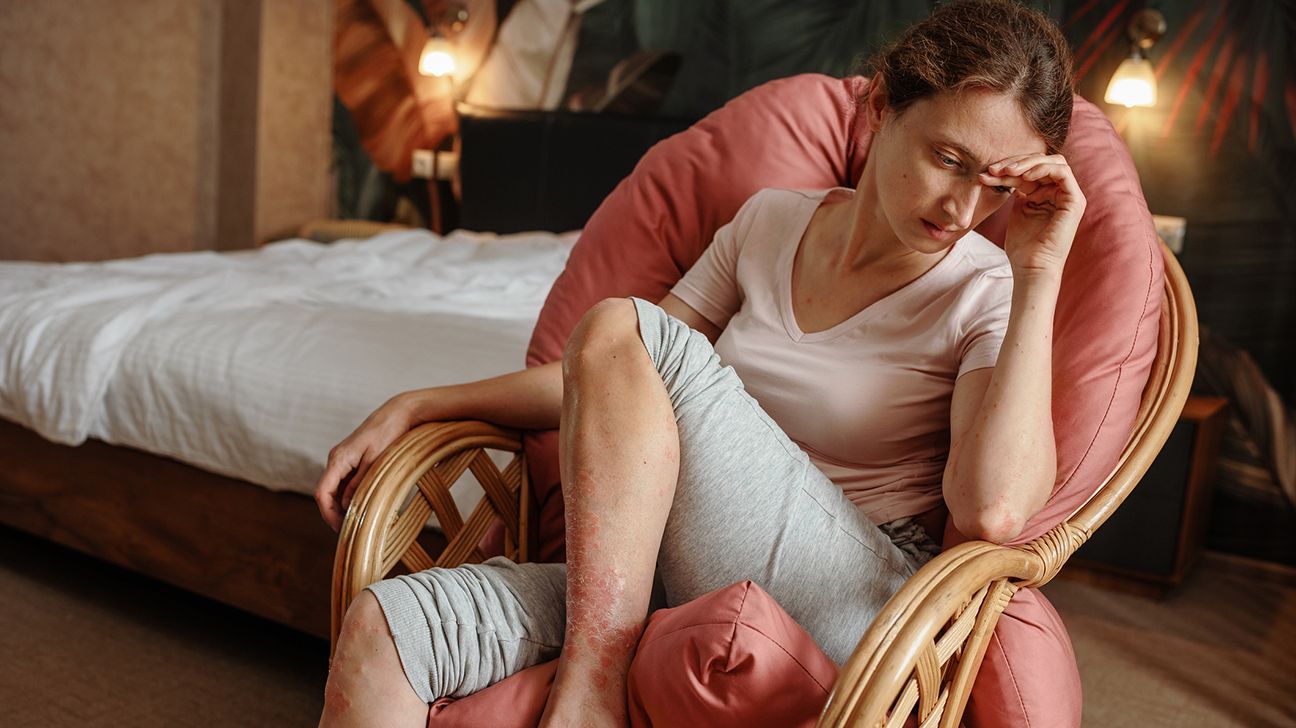During a flare-up or if left untreated, eczema can cause the skin to become so dry or inflamed that it becomes painful. Medications and at-home remedies can help stop and prevent this.

Eczema, also known as atopic dermatitis, is one of the most common inflammatory skin conditions, especially in young children. People with eczema experience dry, itchy, irritated, thick, or inflamed skin that often appears in patches or certain areas of the body.
Although itchy skin is the most common symptom of eczema, it’s not uncommon for people with eczema to also experience pain as a symptom. Eczema can hurt when the skin becomes irritated from inflammation, scratching, or even complications like open wounds.
Below, we’ll explore more about what causes pain in eczema, including strategies you can use to target and alleviate pain if you live with this condition.
Eczema often cycles through periods in which symptoms are minimal or disappear and then worsen again — also known as remission and flare-ups.
When someone is having an eczema flare-up, they may experience symptoms like:
- dry and itchy skin
- burning or stinging skin pain
- tingly or crawling skin sensations
- scaly or thick patches of skin
- rash on the back of the neck or face
- rash on the creases of the knees or elbows
- lighter, darker, redder, or discolored patches of skin
One
Research shows that eczema pain can have a
It’s much more difficult for younger children with eczema to communicate when they’re experiencing symptoms like skin pain. But research on children with atopic dermatitis suggests that eczema pain is also common in children.
In one
The survey results found that roughly
Although everyone’s eczema symptoms are different, some people with the condition report that water is a trigger for flare-up symptoms.
Swimming in certain types of water, such as chlorinated water or salt water, can lead to skin irritation for some people with eczema, according to the National Eczema Association. Hot water during baths and showers can also irritate eczematic skin, especially during a flare-up.
During a flare-up, the skin may become so irritated that even tap water can cause a burning sensation. If you’ve noticed that your eczema pain flares up while you’re swimming or bathing, reach out to a doctor to discuss these symptoms.
One of the most important treatments for eczema is keeping the skin
But when you have eczema, harsh chemicals and additives in these types of skin care products can actually do more harm than good. In fact, skin irritants in body care products are one of the most common triggers for eczema flare-ups.
If certain lotions cause skin pain and irritation, it’s possible that your skin care products are too harsh. Instead, check out our top 10 list of the best eczema-friendly lotions that you can try instead.
If your skin has become dry enough to crack and form lesions in the skin, the water content of most lotions may also be irritating. Using a water-free moisturizer may be the least painful; you can even make some of these eczema relief cremes and balms at home.
How can you get rid of eczema pain?
Although there’s no current cure for eczema, treatments like medications, phototherapy, and at-home approaches can alleviate symptoms like itching and pain.
If you’re interested in learning more about what treatment options are available for eczema, check out our complete guide to eczema treatment. Once you have a few options in mind, you can reach out to a dermatologist or doctor to discuss a treatment plan that fits you.
Eczema is an inflammatory skin condition that causes symptoms like dry, itchy, and painful patches and lesions on the skin. Research suggests that an overwhelming percentage of people with eczema report pain as one of their primary symptoms.
Several treatment options can help manage inflammation and lower symptoms like skin itch and pain. If you’ve received a diagnosis of eczema, consider reaching out to a doctor to discuss building a treatment plan that will work to ease your symptoms.
